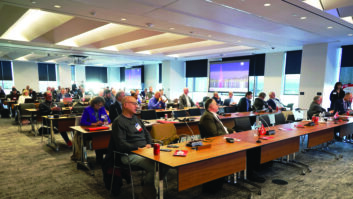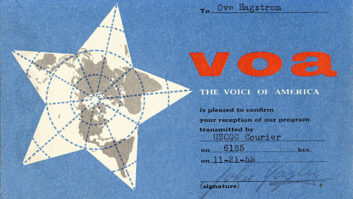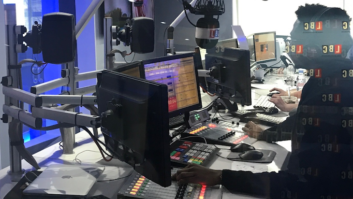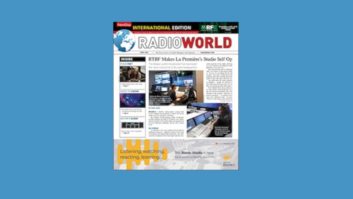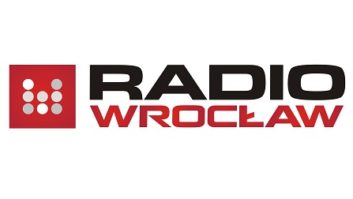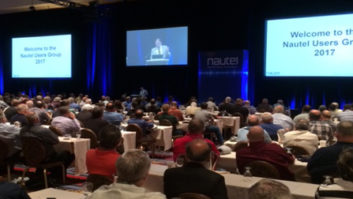How many people are actually listening to internet radio? Based on the highly-precise measurement techniques being used today — no one really knows.

The problem has to do with the methods used to assess online listenership, which has no resemblance to how over-the-air audiences are measured. Due to the unique nature of online measurement, advertisers seeking to target specific genders and age demographics cannot do this directly over internet radio; even though they can achieve this on over-the-air stations.
DIFFERENT MEASUREMENT METHODS
The fundamental of over-the-air radio audience measurement is the diary system, whether recorded by listeners on paper or electronically. A more advanced version used by rating agencies such as Nielsen is the Personal People Meter. The PPM collects inaudible tones emitted by the radio stations that participants are listening to. These tones allow the ratings agency to determine who was listening to which station when.

Either way, these audience measurement systems are based on groups of participants whose ages, genders, and socioeconomic status is statistically representative of the listening area’s general population, and recorded as such. That is what makes this data meaningful to advertisers.
Online audience measurement has none of these capabilities built into its design. Instead, the number of listeners logged onto any given internet radio station is measured by the number of audio streams requested and/or “served” by the station to listeners over the web. This data is recorded in the online station’s “streaming server log” (or “online server log”); providing an accurate record of how many connections were in use at any given time — precisely. And that’s it.
[Read: EBU Says Radio Is Most Trusted Medium in Europe]
Of course, a grand total of connections is of no use to advertisers, nor to internet stations trying to understand their audience mix and monetize it effectively. This is why an online audience measurement firm such as StreamAnalyst carefully dissects a station’s streaming server log to extract as much useful audience information as it can.

“The statistics we provide include unique listeners, number of listening sessions (by day/daypart/hour/quarter-hour), average number of listeners, AQH (average quarter-hour) persons, CUME unique listeners, peaks and minimums of the number of simultaneous listeners, duration of listening sessions, average time spent, aggregate tuning hours, geolocation (country, state/province, city), players, platforms, devices, bandwidth, (and) referrers,” said Jean-Luc Halleux. He is general manager of InternetOfficer SPRL, a Brussels-based company that provides the StreamAnalyst service.
“Our statistics are obtained from mathematical processes applied to the log file data,” Halleux added. “As no human factor is involved, the results are ‘perfectly accurate.’”
THE PROBLEM WITH “PERFECTION”
By putting the term “perfect accuracy” in quotation marks, Halleux is acknowledging the limits inherent in this kind of methodology.
Those limits are outlined by James Cridland, editor of the podcast news site Podnews.
“If I start listening on my computer, then go outdoors and listen on my phone, I cannot see any way of knowing that it’s a ‘unique listener’ unless that person is logged in on both devices using a username/password, which typically doesn’t happen for online streams,” said Cridland. “That behavior would be listed as two unique devices. But it’s one listener, and if Halleux is claiming he is measuring actual ‘listeners,’ as he does, it’s not ‘perfectly accurate.’”
True: The total number of “listening sessions” (AKA connections) that an internet radio station records in its server log isn’t necessarily the number of people listening at that time. In fact, there are likely far fewer unique people logged into the streams than the log indicates.
It’s not the server log’s fault. It’s the fact that not every connection represents a unique connection by a new human being — or by a human being at all.
After all, a single listener can use more than one device at a time to connect to online audio streaming; resulting in multiple connections being recorded in the server log. Meanwhile, there are lots of automated “bots” (software programs from various sources) connecting to streaming media sites over the web an on ongoing basis. They do this to check which streams are active and which are not — and their connections are recorded in the server logs as well.
“More usually, though, much of the exaggerated listening totals are being produced by inexperienced operators confusing ‘stream starts’ with total listening figures,” said Cridland; influenced by “a business imperative to quote the largest numbers they can find.”
Then there is the problem of demographics, knowing the ages, genders, and pay scales of people tuning in.
Broadcast audience measurement is designed to capture this data, which advertisers use to create targeted ad campaigns. But server logs don’t capture this demographic information, which is what advertisers need to make their ads generate sales.
“Online server logs are great at measuring devices, rather than people,” Cridland observed. “Without enforced log-in (requiring humans to electronically sign into the stream before hearing it), the only thing you have is a number of devices that have connected to a stream. You don’t know anything about the people listening; how old they are, whether they’re a boy or a girl, or so on.”
INTERPRETING ONLINE MEASUREMENT
StreamAnalyst and other audience measurement firms such as Triton Digital are well aware of the limits associated with using server logs to measure audiences, and they do their best to keep people from taking those raw totals at face value.
“It is key that broadcasters and advertisers correctly interpret the audience measurements,” said StreamAnalyst’s Halleux. “Our support team assists customers to make sure they get all the clarifications they need.”
For instance, “There have been major concerns with the count of the number of listening sessions,” he said. “It is important to clearly define the minimum session duration; depending on the standards in a country, we only count sessions of at least 5 minutes, 1 minute, 30 seconds or 15 seconds. It is clear that counting all sessions even those that only last 1 second is not a useful metric for advertisers.”
Meanwhile, “Triton Digital’s Webcast Metrics service uses a mix of client and server side technologies to measure online audio,” said John Rosso, the company’s president of Market Development. “Webcast Metrics captures every listening session. So, the accuracy is absolute. We apply some editing rules that are intended to filter out nonhuman ‘invalid traffic’ per the Media Rating Council and Interactive Advertising Bureau guidelines.”
Rosso added that it is possible to extract streaming audio demographics data from streaming server logs, by providing these logs to third-party firms that can pull user information from it.
“Streaming audio sites can use cookies placed on a listener’s browser to learn about their listeners’ age, gender, and preferences,” he said. “This data can then be used by advertisers to target ads to them on an individual basis. Meanwhile, Apple and Android smartphones have ‘ad IDs’ that are unique to each user. Like cookies, these can be checked against the listeners’ profile in the platform of third-party data provider’s such as Nielsen Marketing Cloud or Acxiom, to provide age and gender data to advertisers.”
Collectively, such efforts are improving the quality of online audience measurement and making the data it produces more useful to internet stations and advertisers. And they are certainly more accurate than many in-house measurements made by internet stations themselves, said James Cridland.
Still, the problems of bots, single users triggering multiple streams, and the misinterpretation of streaming totals by inexperienced salespeople means that buying online ad time based on ‘listener sessions’ alone remains a risky business.
Fortunately, “advertisers are clever enough to ask questions around data,” said Cridland. “I hope that they continue asking questions.”
James Careless reports on the industry for Radio World from Ottawa, Ontario.
